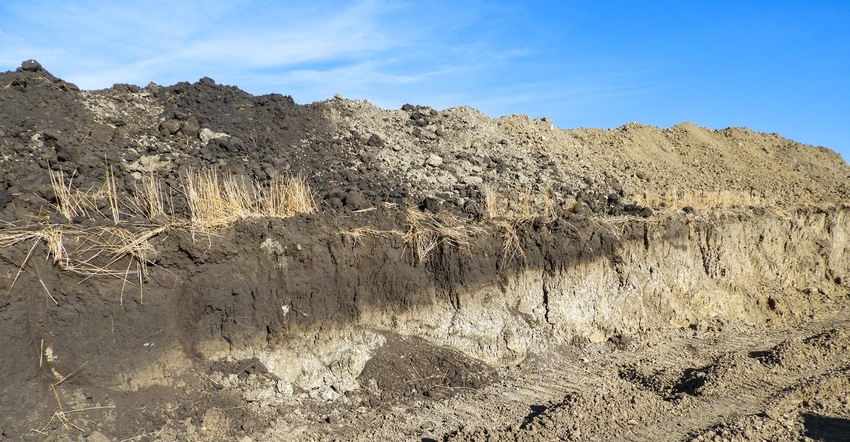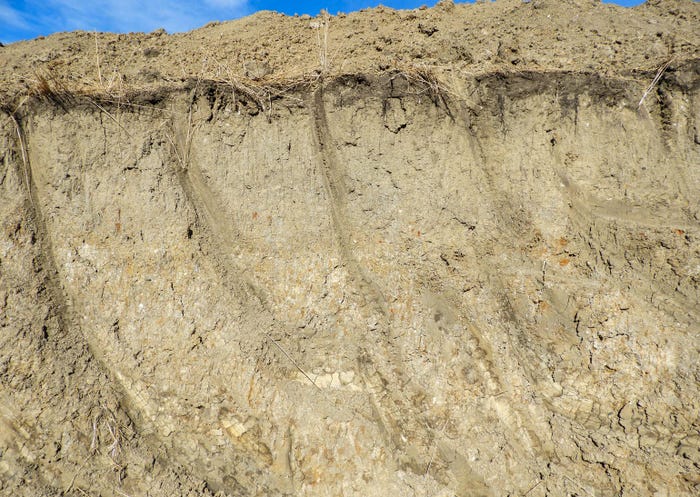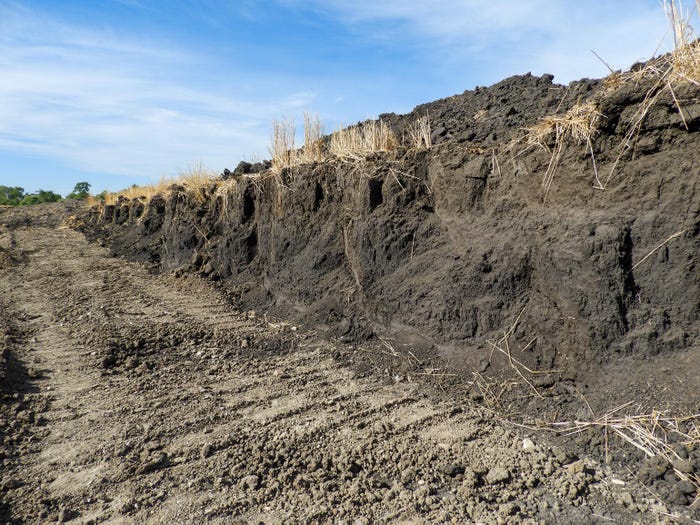September 23, 2020

David Kruger, Twin Brooks, S.D., recently got a stark visual reminder of the soil erosion that tillage can cause.
When a field that he rents was tiled, Kruger dug a trench through his own land to run a pipe downhill to remove the water.
The trench revealed startling differences between the soil at the top and the bottom of the hill.
At the top of the hill, there is only 3 to 4 inches of topsoil left. At the bottom of the hill, there are several feet of dark, rich topsoil.
Kruger was surprised to see the difference because field had been no-tilled since 1997. Since 2004 it has had a corn-soybean-wheat rotation. Since 2010, a cover crop had been planted after wheat. All are good soil health management practices.
 WHAT’S LEFT: Only 3 to 4 inches of topsoil remain at the top of this hill on David Kruger’s farm in Twin Brooks, S.D.
WHAT’S LEFT: Only 3 to 4 inches of topsoil remain at the top of this hill on David Kruger’s farm in Twin Brooks, S.D.

So why had there been so much erosion?
What Kruger saw was part of the legacy of conventional tillage done over the course of the last century, according to Sharon Schneider, USDA Agriculture Research Service supervisory soil scientist in Brookings, S.D.
Prior to 1997, the field had been tilled multiple times each season.
“Every time you lift the soil some of it slumps downhill,” she says. “We can see it clearly in this excavated trench. We’re dealing with landscapes that have been farmed for more than 100 years. This is what happens.”
The soil at the top of the hill is light colored because the high organic material has been removed and subsoil material is incorporated into the tilled layer.
“In extreme cases you’re farming the subsoil,” Schneider says.
 TILLAGE EFFECT: The side of a trench excavated through Twin Brooks farmer David Kruger’s hill reveals the effects of soil erosion. Over decades of conventional tillage, the dark topsoil eroded from the top of the slope and accumulated at the bottom of the slope.
TILLAGE EFFECT: The side of a trench excavated through Twin Brooks farmer David Kruger’s hill reveals the effects of soil erosion. Over decades of conventional tillage, the dark topsoil eroded from the top of the slope and accumulated at the bottom of the slope.

Kruger’s yield maps show that yields have been 12-15 bushels per acre less on the top of the hill than in lower areas. If not for his good soil conservation practices, the differences would likely have been worse.
“From ’97 on, it’s been farmed in a manner that’s definitely helped,” Kruger says. “We could have easily lost another 3 to 4 inches of topsoil off that ridge.”
Source: South Dakota Soil Health Coalition, which is solely responsible for the information provided and is wholly owned by the source. Informa Business Media and all its subsidiaries are not responsible for any of the content contained in this information asset.
Read more about:
Soil ErosionYou May Also Like




